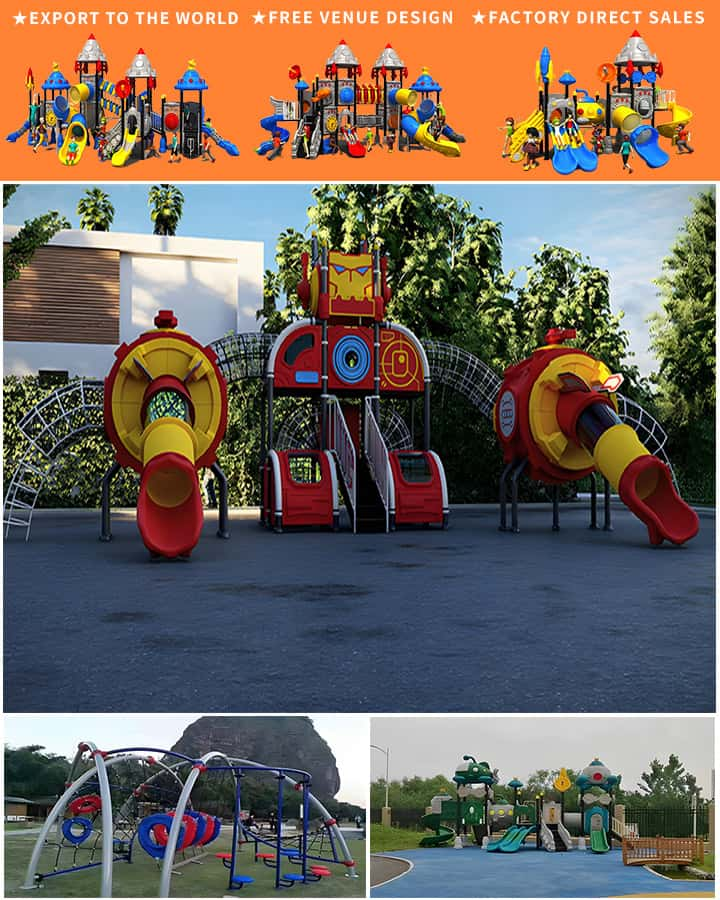Designing a kids’ playground that captures the imagination and provides endless fun can be a challenging but rewarding project. From swings to slides, climbing frames to sandpits, every element plays a crucial role in creating an environment where children can play safely while developing their physical and social skills. Here’s a comprehensive guide to help you create the ultimate kids’ playground.
Planning Your Playground
1. Location and Space: Choosing the right location is vital. Ideally, the playground should be situated in a flat, easily accessible area away from busy roads or hazardous zones. Ensure there is enough space to accommodate various equipment and allow for future expansions.
2. Safety First: Safety should always be your top priority. Use soft, shock-absorbent surfaces like rubber mats or wood chips under equipment to cushion falls. All playground equipment must meet safety standards and be regularly inspected for wear and tear.
Essential Play Equipment
1. Swings: Swings are classic playground staples that offer simple yet exhilarating fun. They come in various types, including traditional belt swings, bucket seats, and even adaptive swings for children with special needs.
2. Slides: Slides add a dash of excitement to any playground. Consider including slides of different heights and designs, such as spiral slides, tube slides, and even themed ones like fireman poles.

3. Climbing Frames: Climbing equipment is excellent for developing motor skills and building confidence. Options range from basic jungle gyms to complex climbing walls and rope courses.
4. Seesaws and Merry-Go-Rounds: These timeless pieces of equipment provide opportunities for cooperative play and balance training. Make sure they are sturdy and have non-slip surfaces.
Interactive Zones
1. Sandpits and Water Play: Adding a sandpit or water features can introduce sensory play. Sandpits should include toys like buckets and shovels, while water areas can feature small fountains, sprinklers, or interactive water tables.
2. Educational Stations: Incorporate elements that stimulate learning and creativity. This might include musical instruments, chalkboards, or nature exploration areas where kids can learn about plants and insects.
Age-Appropriate Zones
1. Toddler Areas: Designate a specific area for younger children with smaller, safer equipment like mini slides, low ride-on toys, and soft play structures. These areas should be enclosed to prevent toddlers from wandering off.
2. Adventure Zones for Older Kids: Older children need more challenging and stimulating activities. Include higher climbing structures, longer zip lines, and complex puzzle games to keep them engaged.
Accessibility and Inclusiveness
Ensure your playground is inclusive by incorporating equipment suitable for children with disabilities. Features like wheelchair-accessible swings, transfer stations, and tactile paths can make the playground enjoyable for all.
Maintenance and Upkeep
Regular maintenance is key to keeping the playground safe and enjoyable. Conduct routine inspections, promptly repair any damaged equipment, and ensure the area is clean and litter-free. Involve local communities in maintenance efforts to foster a sense of ownership and pride.
Community Engagement
Finally, engage the community in the planning and development process. Solicit feedback from parents, teachers, and local organizations to ensure the playground meets the needs of its users. Hosting regular events or workshops can also help maintain interest and encourage positive interaction among young visitors.
Creating a kids’ playground that is both fun and functional requires thoughtful planning and attention to detail. By considering safety, accessibility, and the diverse needs of children, you can build a space that offers endless joy and developmental benefits for years to come.




